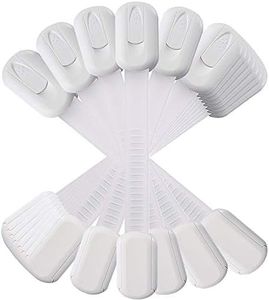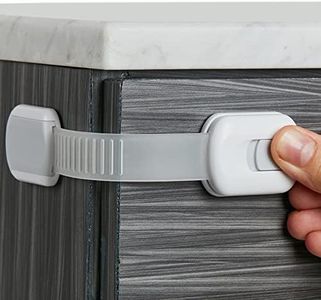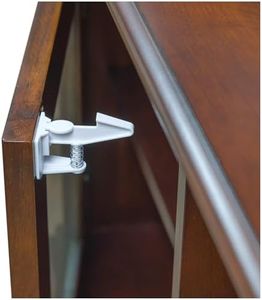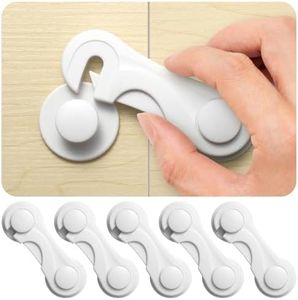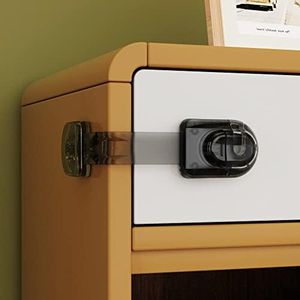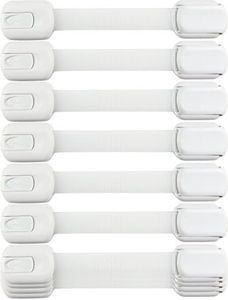We Use CookiesWe use cookies to enhance the security, performance,
functionality and for analytical and promotional activities. By continuing to browse this site you
are agreeing to our privacy policy
10 Best Child Safety Cabinet Locks
From leading brands and best sellers available on the web.Buying Guide for the Best Child Safety Cabinet Locks
Choosing the right child-safety cabinet locks is essential to ensure your child's safety and your peace of mind at home. As you consider your options, it's important to think about where you'll use the locks, how frequently you'll need to access your cabinets, and the particular challenges your child might pose in terms of curiosity or strength. The best lock will balance security, ease of use for adults, and appropriate fit for your cabinet type. Evaluate your home and habits to decide which features are most important to you, and always opt for products designed specifically with child safety in mind rather than makeshift solutions.Type of LockThe type of child-safety lock determines how it attaches to your cabinet and how it secures the doors. Common types include magnetic locks (installed inside and opened with a key), adhesive straps, sliding locks, and spring-action locks. Magnetic locks are very discreet and hidden from view, making them harder for children to figure out, while adhesive straps and sliding locks are easier to install but may be more visible. Consider how permanent you want the solution to be, how strong your child is, and whether you want locks that are less noticeable.
Installation MethodHow the lock is installed can affect both its security and your furniture. Some locks require drilling holes and using screws (permanent and strong), while others use adhesive pads (easier to remove but potentially less durable over time). For renters or those wanting to avoid damage to cabinets, adhesive options may be preferable. If durability and long-term use are priorities, consider screw-mounted locks. Match the installation type to your needs and your willingness to alter your cabinetry.
Ease of Adult UseA good safety lock should be challenging for children but easy for adults to operate—especially when your hands are full or you're in a hurry. Some locks require two hands or complicated movements to open, which could become frustrating with frequent use. When choosing, think about how often you access the locked cabinets and whether older family members or babysitters will also need to use them. If frequent access is needed, prioritize user-friendly locks that adults can open quickly yet children cannot.
Adjustability and VersatilitySome locks are designed for specific types or shapes of cabinets, while others are more adjustable and can fit a range of handles, knobs, or drawers. Adjustable locks are a good choice if you have a variety of cabinets or may want to move the locks in the future. For oddly shaped handles or large, double-door cabinets, look for versatile locks that can adapt to different situations to ensure a snug, secure fit.
Strength and DurabilityThe strength of the lock is essential, especially for curious or persistent children. Some locks are built with stronger materials or have clever mechanisms that resist tampering or force. Consider the material the lock is made from (such as tough plastic or metal parts) and any safety certifications. If your child is strong or has a knack for defeating basic locks, prioritize sturdier, tamper-resistant options.
RemovabilityThinking ahead to when you might no longer need the locks, consider how easily they can be removed. Some adhesive locks promise residue-free removal, while screw-in types will leave holes. If your living situation is temporary, or you plan to remove the locks in a few years, look for products that are easier to uninstall without damaging your cabinetry.
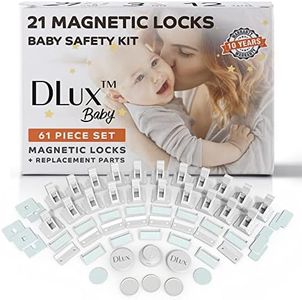
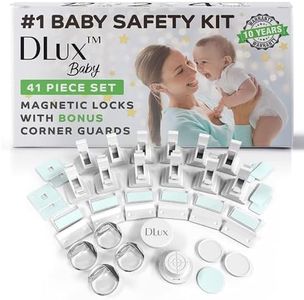
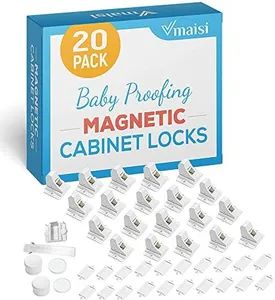
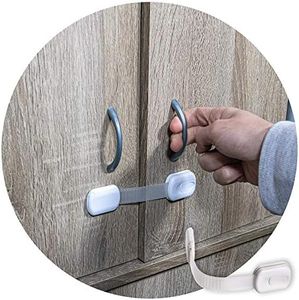

![[6 Packs-Upgrade] Sliding Cabinet Locks Child Safety,Great for Baby Proofing for Both Cabinet Knob and Cabinet Handle,Proof Your Kitchen,Bathroom,Storage Door,Easy Install Without Drilling or Adhesive](https://images-proxy.bestreviews.guide/ZE5D6CgfWEVqSbniDOyjQO8L2tA=/0x300/https://m.media-amazon.com/images/I/314jQrLfqJL._AC_CX679_.jpg)
